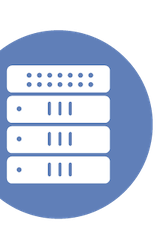Security silos can make us miss the important things. Tom Hollingsworth heard from Palo Alto Network at Security Field Day and looks at Cortex and how it can help us get better results from our data without the silos getting in the way.
Bleeding the Dragon With WPA3 and Aruba – Gestalt IT
Get an update on the latest vulnerabilities in WPA3 and how one of the creators of the protocol is addressing them in this review by Tom Hollingsworth. He got to hear about Aruba’s latest at Mobility Field Day over the summer.
128 Technology – The Best Voice Routing Platform You’ve Never Heard Of
Sometimes the best solution to a problem comes from an area where you didn’t think you’d find it. Tom Hollingsworth looks at 128 Technology and how their voice pedigree helped them built a quality WAN routing platform. Tom got a good look at 128T’s latest at their Tech Field Day Exclusive event over the summer.
Securing Your Enterprise With VIAVI Observer Apex
What does the view from the top look like? Is it expansive? Or do you lose the details? Tom Hollingsworth reviews VIAVI Observer Apex and how their software can help you see both the vision of your entire organization and the details you need to ensure that you don’t miss any issues.
Fast Friday – Mobility Field Day 4
In this post, Tom Hollingsworth looks at the frontiers of wireless that were on display at Mobility Field Day. He makes the convincing case that as the new edge of the network, analytics, new spectrum, and customer value is more important than ever.
Stopping Network Blame With Kemp
How does you load balancing solution stack up? Do you blame the network when everything goes down? Or does the cloud make you anxious? Tom Hollingsworth takes a look at Kemp and how their per-application solution can give you peace of mind and how it can be used in practical application with offerings demonstrated at Networking Field Day earlier this year.
Rooted in Security With Banyan
Any security solution you deploy today needs strong roots. But what if you need it to be distributed? Tom Hollingsworth takes a look at what Bayan Security presented at Security Field Day and discusses how they can build a strong root of zero trust just like their namesake tree does.
The Contention Window: S1E12 : TechFieldDay – Mobility Field Day 4 Preview
This episode of the Contention Window sees hosts Scott Lester and Tauni Odia talking with Mobility Field Day organizer Tom Hollingsworth and Tech Field Day founder Stephen Foskett. They’re talking about the upcoming Mobility Field Day event and the overall background of the event series.
Cross Pollinating Catalyst Platforms With NetBeez
Containers are the new way to build software that can run anywhere. That’s especially true if you’re wanting to run software on a Cisco Catalyst Switch. Tom Hollingsworth takes a look at how NetBeez is leveraging this capability to bring their exciting analytics solution to the platform.
Remote Access Amazement With Opengear
Is the stress of remote out-of-band management starting to affect the way your organization deploys? Tired of being told to get on a plane to fly out and fix a failed installation? Tom Hollingsworth takes a look at what Opengear showed off at Tech Field Day Extra at Cisco Live US 2019 and their new NetOps-style Lighthouse system. See how it can help streamline your remote deployments and be amazed and the way you can utilize industry standard tools to create resilient monitoring systems.
The Briar Patch of Software Patches
Patching insecure software is usually the right answer, right? So why do we argue against it so much? Tom Hollingsworth discusses lessons learned from VMware’s recent Security Field Day presentation and how we could all be a bit better about patching if we just act like pirates.
The Development of DevNet’s Future
It may not have happened overnight, but Cisco has successfully developed a developer community around their SDN solutions with DevNet. Tom Hollingsworth attended some of the earliest session, and has been impressed with how it has grown. To really go to the next level, Tom things they need to aggressively pursue entry-level outreach, motivating everyone in the networking field to join them in the software-defined future.
Tackling Troublesome Tunnels With 128 Technology
Can you build a modern SD-WAN network without using tunnels? 128 Technology thinks that you can and they have the services to prove it. Tom Hollingsworth takes a look at their presentation from Networking Field Day 20 and how they’re building tunnel-free networks.
Meraki’s Eye in the Sky
Meraki may be the last name you think of when it comes to security cameras. But the engineering effort put into their line of on-premises security devices is very impressive. Tom Hollingsworth takes a look at a couple of their new offerings that they showed at Tech Field Day Extra at Cisco Live US 2019 and gives his perspective on how Meraki sees the world.
Intelligence in the Mist
How can cloud and artificial intelligence combine to make your wireless network more resilient to faults? Tom Hollingsworth takes a look at how Mist Systems, now a Juniper Networks, is using brand new ideas to solve age-old reliability issues. They presented at Cloud Field Day recently, so Tom got a deep dive at the event. We’re looking forward to seeing them at Mobility Field Day later this year as well!
The Good, the Bad, and the Questionable: Acquisition Activities
There have been a number of notable acquisitions in IT recently, and Tom Hollingsworth breaks them down into the good, the bad, and the…questionable in this post. One of our upcoming presenters for Security Field Day, Palo Alto Networks, made what Tom thinks is a good move in acquiring Twistlock. This should provide them the talent and IP to offer container visibility solutions, which is needed to stay relevant in infrastructure security.
Avoiding Automation Archipelagos With Extreme Networks
When it’s your turn to build the automation strategy for your environment, make sure you don’t fall into the trap of building a series of automation islands with no integration. Tom Hollingsworth takes a look at some recent announcements that Extreme Networks made at Networking Field Day and how they can help you connect your automation archipelago.
Yellow Capes and Safe Escapes – The Journey of Zoë Rose
Learning about the journey of Zoë Rose from her past to the bright future ahead of her has been enlightening for Tom Hollingsworth. He covers some highlights of the presentations she’s shared at Security Field Day and Aruba HER over the past few months and how we can learn about the path she’s taken to get where she is today.
All-In With SD-WAN and Fortinet
Tom Hollingsworth takes a look at the Fortinet presentation from Networking Field Day and discusses how ASICs may be the key to Foritinet finding their ante in the SD-WAN market. Can SD-WAN innovate through software alone? Or can custom hardware ASICs make the difference in performance? Tom discusses.
Security Field Day – The Non-Conference
The Tech Field Day team started the Security Field Day event because they recognized that security is just as vital to IT operations as storage, networking, or virtualization. In this post, Tom Hollingsworth talks about how it distinguishes itself in the world of security event, by being the non-conference. That means no crowds, in-depth technical discussions, and live streamed for all to see.







